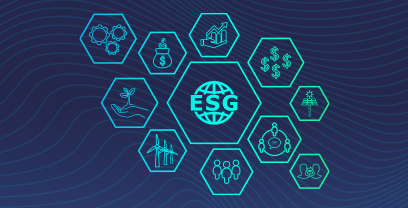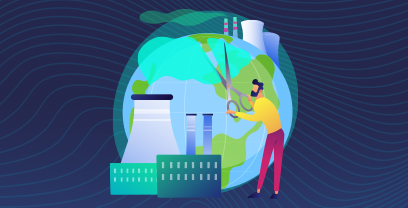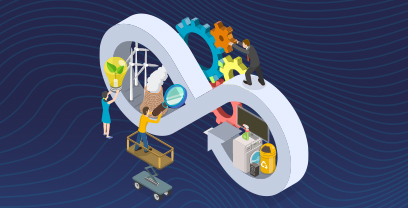|
The Forrester Wave™: Supplier Value Management Platforms, Q3 2024 See Report
Blog »
Net Zero: What Does it Really Mean?

Professor David L. Loseby MCIOB Chartered, FAPM, FCMI, FCIPS Chartered, MIoD, FRSA
The more I read and research on the subject of “how to get to net zero” the more I feel how little I perhaps know! Further, if the truth be known I suspect many others in procurement and supply chain are feeling the same, but maybe that’s not true.
Having just listened to a very informative and comprehensive webinar by Dr Natacha Tréhan and Arnaud Malardé [Moving Towards a Net Zero Supply Chain Webinar | Ivalua] what struck me were the following key takeaways:
1. This is not a “side of the desk” or part time role, nor within the skill set or training for the vast majority of purchasing and supply chain managers.
2. A unified understanding of what net zero really means: Net zero is achieving a balance between the carbon emitted into the atmosphere, and the carbon removed from it. This balance – or net zero – will happen when the amount of carbon we add to the atmosphere is no more than the amount removed.
- These ‘residual’ emissions will need to be removed from the atmosphere: either by changing how we use our land so it can absorb more carbon dioxide, or by being extracted directly through technologies known as carbon capture, usage and storage. Source
- To reach net zero emissions from homes, transport, agriculture and industry will need to be cut. In other words, these sectors will have to reduce the amount of carbon they put into the atmosphere. But in some areas, like aviation, it will be too complex or expensive to cut emissions altogether.
3. Scope 3 emissions are responsible for the vast majority, circa 70-80% of a company’s carbon emissions through the supply chain and will typically be 11 times that of scope 1 emissions. The Greenhouse Gas Protocol produced this image and put things in perspective (Figure 1).
4. There are 15 defined Scope 3 categories:
- Purchased goods and services
- Capital goods
- Fuel and energy related activities (not in scope 1 or 2)
- Upstream transportation and distribution
- Waste generated in operations
- Business travel
- Employee commuting
- Upstream leased assets
- Downstream transportation ad distribution
- Processing of sold products
- Use of sold products
- End of life treatment of sold products
- Downstream leased assets
- Franchises
- Investments

Figure 1: Greenhouse Gas Protocol -Scope 1, 2 & 3 emissions (Source)
5. Good practice is starting to emerge and I’m sure more will be placed in the public domain over the next few years as we dig into the detail and address sector issues, SME related approaches, full tier approaches within the supply chain (not just tier 1 &2) as well as refining data sets/standards and methods of materiality.
6. You will need a structured and comprehensive digital platform to plan, capture, coordinate, collaborate, measure, validate, etc., all of the attributes associated with your entire supply chain for pretty much any business that is not an SME. In fact, I wouldn’t rule out the SME community completely either. Further, if you think you can do it in excel, think again…
7. Businesses will need to collaborate more than ever before if we are to stand any chance of effectively and efficiently developing true baselines, plans and resourced approaches to deliver the quantifiable step change needed.
8. Carbon offsetting is a short term measure or a last resort for the residual aspects of carbon emissions over and above the prescribed 90-95% mitigation measures. In short, to use this as a primary method for addressing material carbon emissions is no more than “kicking the can down the road”, so can’t really be considered a plan at all! After putting a comprehensive plan in place, we still need to consider all the other aspects of ESG such as, waste, water consumption, biodiversity not to mention circular economy principles (re-use, recycle, repair, re-purpose, et al).
9. Clarity of what exactly Internal Carbon Pricing (is): Essentially a tool an organization can use within the business to guide its decision-making process in relation to climate change impacts, risks and opportunities. Carbon pricing is an instrument that captures the external costs of greenhouse gas (GHG) emissions—the costs of emissions that the public pays for, such as damage to crops, health care costs from heat waves and droughts, and loss of property from flooding and sea level rise—and ties them to their sources through a price, usually in the form of a price on the carbon dioxide (CO2) emitted. A price on carbon helps shift the burden for the damage from GHG emissions back to those who are responsible for it and who can avoid it. Source
10. Prioritization will be key for many organizations, which will vary from sector to sector and could well be informed by an approach such as the Marginal Abatement cost Curves (MACC). This will bring visual focus onto the key aspects for prioritization such as transport, lighting, refrigeration/air conditioning as per the example from the World Bank.
Summary
If you want to make the transition to a net zero carbon emissions company, you need to start by choosing your suppliers and implement the right procurement policies. Procurement and supply chain professionals can make a big difference in reducing carbon emissions through their choices in purchasing and investments in supply chain technologies.
For more information, you may reference the following resources.
Links
- https://sciencebasedtargets.org/
- https://www.cdp.net/en
- https://www.unglobalcompact.org/
- https://www.wri.org/
- https://ghgprotocol.org/
- https://www.ipcc-data.org/
- https://www.fsb-tcfd.org/
- https://smeclimatehub.org/
- https://www.ademe.fr/en/frontpage/
- https://www.ecotransit.org/en/
- https://ecoinvent.org/
- https://www.exiobase.eu/
- https://doconomy.com/aland-index-solutions-changing-the-game/
- https://www.epa.gov/
- https://naei.beis.gov.uk/data/ef-all
- https://www.gov.uk/government/publications/greenhouse-gas-reporting-conversion-factors-2021
- https://assets.publishing.service.gov.uk/government/uploads/system/uploads/attachment_data/file/300955/pb14075-ghg-common-queries-140401.pdf

Staff Contributors
Contributing writers from inside and outside Ivalua occasionally add items and information to this blog. We are a team who share an interest and curiosity about procurement and spend management.


